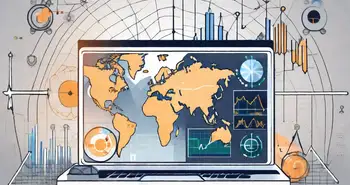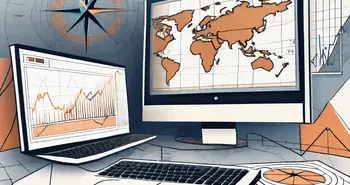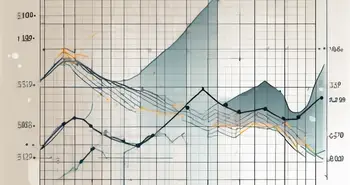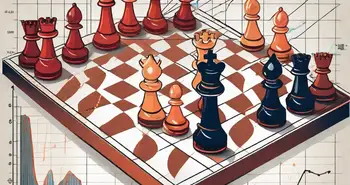The Rise of Multilateral Trading Facilities: Benefits and Challenges

Multilateral Trading Facilities (MTFs) have become integral to the global financial landscape, providing a platform for trading securities and other financial instruments. As an expert in the field, I am here to guide you through everything you need to know about MTFs, from their definition and functions to their regulatory framework and future prospects.
Understanding Multilateral Trading Facilities
At its core, an MTF is a type of trading venue that brings together multiple buyers and sellers to execute trades. Unlike traditional exchanges, MTFs do not have a central limit order book and instead match trades using computer algorithms. This innovative approach allows for increased efficiency and transparency in the trading process.
Definition and Function of Multilateral Trading Facilities
An MTF is a regulated platform that enables the trading of financial instruments between market participants. It provides an alternative to traditional exchanges, offering greater flexibility and lower transaction costs. MTFs operate under the auspices of regulatory authorities, ensuring fair and transparent trading practices.
One of the key functions of MTFs is to provide a venue for trading securities that may not be readily available on traditional exchanges. This brings greater market access and liquidity to a wide range of instruments, benefiting both institutional and retail investors.
The Importance of Multilateral Trading Facilities in Financial Markets
The advent of MTFs has revolutionized the financial markets by fostering competition and innovation. These platforms have democratized access to trading, leveling the playing field for small investors and reducing the reliance on large financial institutions.
Furthermore, MTFs have introduced transparency and efficiency into the trading process, allowing market participants to access real-time pricing information and execute trades swiftly. This has resulted in improved price discovery and enhanced liquidity, making MTFs an essential component of modern financial markets.
Moreover, MTFs have also played a significant role in promoting cross-border trading and international market integration. By providing a platform where market participants from different countries can come together to trade, MTFs have facilitated the globalization of financial markets. This has not only increased market efficiency but has also opened up new investment opportunities for investors around the world.
Additionally, MTFs have been instrumental in promoting innovation in trading technology. With their reliance on computer algorithms to match trades, MTFs have paved the way for the development of high-frequency trading strategies and algorithmic trading systems. These advancements have brought greater speed and precision to the trading process, allowing for more sophisticated trading strategies and improved execution quality.
The Structure of Multilateral Trading Facilities
MTFs comprise several key components that ensure their smooth operation and effectiveness. Understanding these components is crucial to comprehending the inner workings of MTFs.
One of the fundamental components of MTFs is their electronic trading platform. This platform facilitates the matching of buy and sell orders, ensuring efficient execution and minimizing trading costs. MTFs also provide market data feeds, enabling participants to access real-time pricing information and make informed trading decisions.
Another key component is the regulatory framework that governs MTF operations. Regulatory bodies such as the Financial Conduct Authority (FCA) impose stringent rules and guidelines to maintain market integrity and protect investors. Compliance with these regulations is vital for the smooth functioning and reputation of MTFs.
Additionally, MTFs have robust risk management systems in place to mitigate potential market risks. These systems monitor trading activities, detect irregularities, and implement necessary measures to maintain market stability. By continuously monitoring and managing risks, MTFs ensure a secure and reliable trading environment for all participants.
How Multilateral Trading Facilities Operate
MTFs operate on the principle of bringing together buyers and sellers to execute trades. Market participants can submit orders to the MTF, which then matches those orders based on predetermined criteria. This process is automated and ensures fair and transparent trading practices.
Moreover, MTFs offer pre-trade and post-trade services to participants, enhancing the overall trading experience. Pre-trade services include order routing, where participants can choose the most suitable venue for executing their trades. This flexibility allows participants to optimize their trading strategies and achieve the best possible outcomes.
Furthermore, post-trade services provided by MTFs play a crucial role in streamlining the settlement process. Trade confirmation and settlement services ensure that transactions are accurately recorded and executed in a timely manner. This reduces the risk of errors and delays, promoting efficiency and trust in the market.
In conclusion, the structure of multilateral trading facilities encompasses various components that work together to facilitate seamless trading operations. From electronic trading platforms and market data feeds to regulatory frameworks and risk management systems, MTFs prioritize efficiency, transparency, and market integrity. By offering pre-trade and post-trade services, MTFs enhance the trading experience for participants and contribute to the overall stability of the financial markets.
Benefits of Multilateral Trading Facilities
MTFs offer numerous advantages to market participants, making them an attractive alternative to traditional exchanges. Let's explore some of the key benefits:
Increased Market Transparency
MTFs provide real-time pricing information, allowing market participants to access accurate and up-to-date data. This transparency fosters trust and enhances market integrity, enabling investors to make informed trading decisions.
Enhanced Liquidity and Price Discovery
By bringing together buyers and sellers, MTFs create a more liquid market for securities. This enhanced liquidity reduces the risk of price manipulation and ensures fair pricing. Additionally, the increased competition among participants facilitates efficient price discovery.
Regulatory Framework for Multilateral Trading Facilities
MTFs operate within a robust regulatory framework to ensure market integrity and investor protection. Let's explore some key aspects of this regulatory framework:
Global Regulatory Standards
Regulatory bodies around the world, such as the FCA in the UK and the Securities and Exchange Commission (SEC) in the US, enforce stringent standards for MTF operations. These standards encompass areas such as risk management, participant eligibility, and trade reporting, promoting trust and stability in the financial markets.
Compliance and Risk Management in Multilateral Trading Facilities
MTFs are required to maintain robust compliance and risk management systems to mitigate potential risks and ensure the smooth functioning of the platform. These systems include measures such as surveillance tools, transaction monitoring, and regular auditing to detect and prevent market abuse or unauthorized activities.
Future of Multilateral Trading Facilities
The future of MTFs looks promising, with technological innovations and evolving market dynamics shaping their trajectory. Let's explore some key trends impacting MTFs:
Technological Innovations Impacting Multilateral Trading Facilities
Advancements in technology, such as artificial intelligence and blockchain, are revolutionizing the financial industry, and MTFs are not exempt from these changes. These innovations promise increased automation, improved transaction speeds, and enhanced security, further bolstering the efficiency and effectiveness of MTFs.
Trends Shaping the Future of Multilateral Trading Facilities
A shifting regulatory landscape, geopolitical developments, and changing market structures are all factors that will play a significant role in shaping the future of MTFs. It is crucial for participants and regulators to adapt to these trends and ensure that MTFs continue to provide a robust and transparent trading environment.
As an expert in the field of MTFs, I have witnessed firsthand the transformative power of these platforms. I remember a time when access to global markets was limited, and trading was predominantly the domain of well-established institutions. With the advent of MTFs, the trading landscape has been democratized, opening doors for investors of all sizes and providing them with greater opportunities.
My advice to anyone considering venturing into the world of MTFs is to educate yourself on the intricacies of the platforms, understand the regulatory framework, and stay informed about market trends and technological advancements. With the right knowledge and a well-thought-out strategy, MTFs can be a valuable tool for achieving your financial goals.
Frequently Asked Questions
What is a Multilateral Trading Facility?
A Multilateral Trading Facility (MTF) is a regulated trading venue that brings together buyers and sellers to execute trades in financial instruments. It operates as an alternative to traditional exchanges, offering increased flexibility and lower transaction costs.
How do Multilateral Trading Facilities operate?
MTFs operate by matching buy and sell orders submitted by market participants. These orders are matched based on predetermined criteria, ensuring fair and transparent trading practices. MTFs also provide pre-trade and post-trade services, such as order routing and trade settlement, to facilitate efficient trading processes.
What are the benefits of Multilateral Trading Facilities?
MTFs offer several benefits, including increased market transparency, enhanced liquidity, and efficient price discovery. They provide real-time pricing information, improving trust and enabling informed trading decisions. MTFs also create a more liquid market by bringing together buyers and sellers, reducing the risk of price manipulation.
What is the regulatory framework for Multilateral Trading Facilities?
MTFs operate within a stringent regulatory framework to ensure market integrity and investor protection. Regulatory bodies around the world enforce standards related to risk management, participant eligibility, and trade reporting. Compliance and risk management systems are also in place within MTFs to detect and prevent market abuse or unauthorized activities.
What does the future hold for Multilateral Trading Facilities?
The future of MTFs is shaped by technological innovations, evolving market dynamics, and changing regulatory landscapes. Advancements in technology, such as artificial intelligence and blockchain, promise increased automation and improved transaction speeds. Participants and regulators must adapt to these trends to ensure MTFs continue to provide a robust and transparent trading environment.
As an expert in the field, I am excited to witness the continued growth and transformation of Multilateral Trading Facilities. These platforms have revolutionized the financial markets, offering new opportunities for investors and contributing to a more inclusive and efficient trading ecosystem.
Ready to experience the future of trading with the innovative features of a Multilateral Trading Facility? Look no further than Morpher, the revolutionary platform that's changing the game with blockchain technology. Enjoy zero fees, infinite liquidity, fractional investing, and the safety of a non-custodial wallet. Whether you're looking to trade stocks, cryptocurrencies, or even unique markets like NFTs, Morpher offers a unique trading experience with up to 10x leverage. Sign Up and Get Your Free Sign Up Bonus today to join the trading revolution and take control of your investment journey with Morpher.

Disclaimer: All investments involve risk, and the past performance of a security, industry, sector, market, financial product, trading strategy, or individual’s trading does not guarantee future results or returns. Investors are fully responsible for any investment decisions they make. Such decisions should be based solely on an evaluation of their financial circumstances, investment objectives, risk tolerance, and liquidity needs. This post does not constitute investment advice.

Painless trading for everyone
Hundreds of markets all in one place - Apple, Bitcoin, Gold, Watches, NFTs, Sneakers and so much more.

Painless trading for everyone
Hundreds of markets all in one place - Apple, Bitcoin, Gold, Watches, NFTs, Sneakers and so much more.









